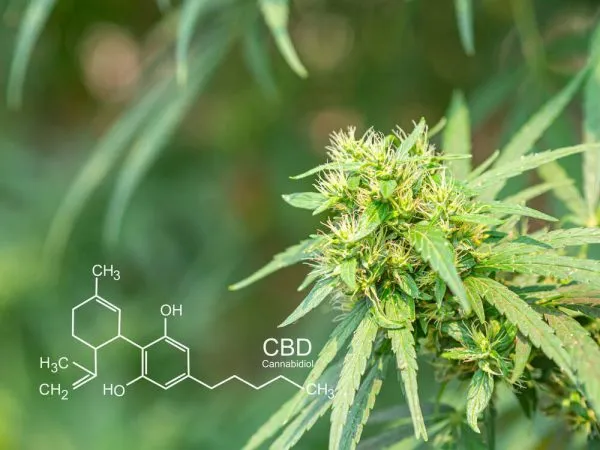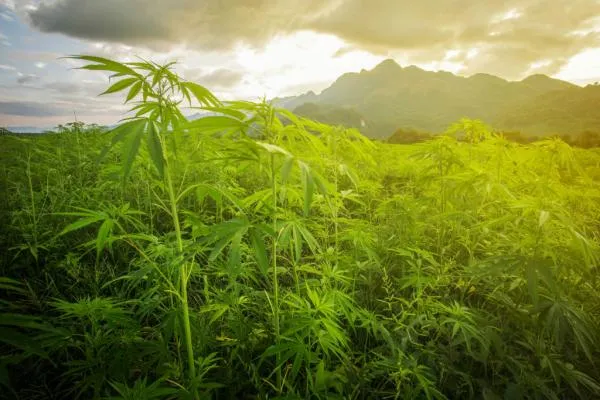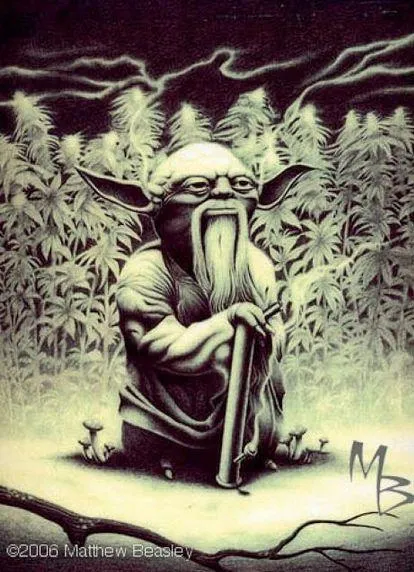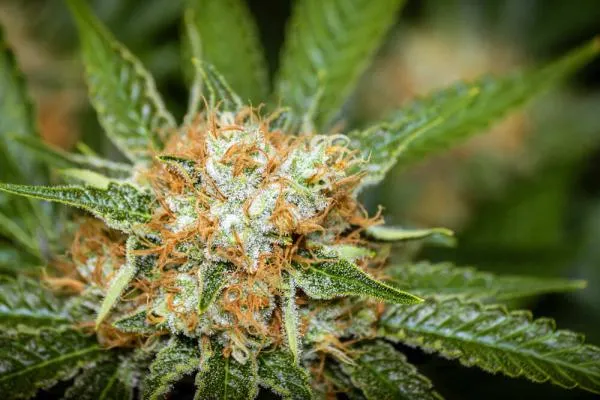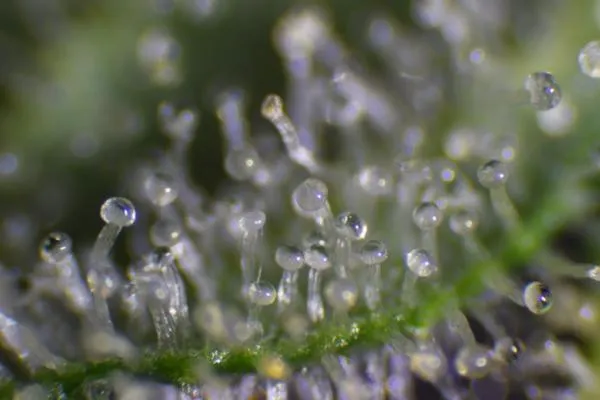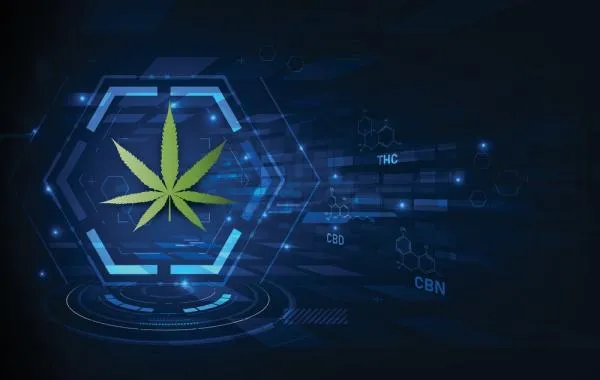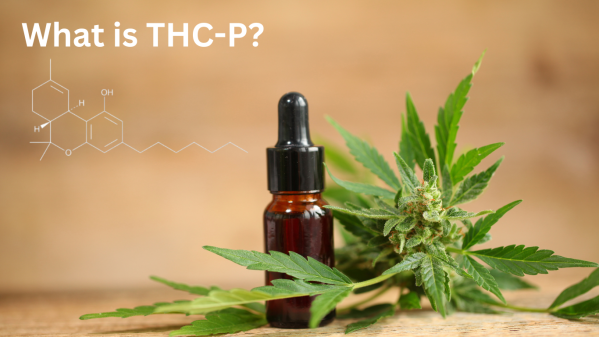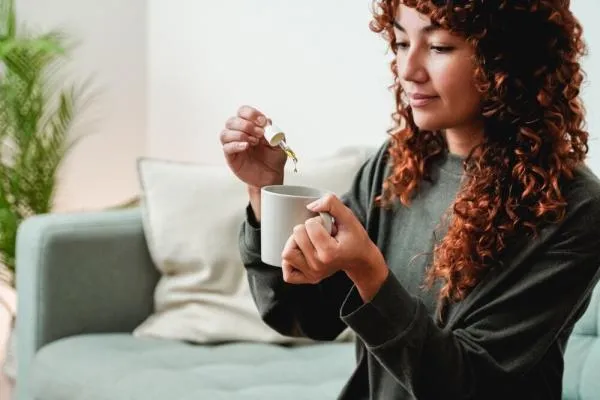With the nothing short of meteoric rise that everyone's second favorite cannabinoid, CBD, has seen over the past decade or so, it should come as little wonder that people are on the lookout for more ways to incorporate it into their daily routines.
CBD oil is what most people turn to, but it is anything but the only option out there. CBD edibles hit the big time in the last few years, and CBD topicals have been increasing in popularity thanks to their targeted anti-inflammation benefits.
But what about the source? Where does the CBD contained in all these products actually originate?
Well, the overwhelming majority of it comes from the humble hemp plant.
In today's write-up, we are going to delve into the world of CBD hemp flower and get a better understanding of what it is, how it's different from other forms of CBD (and regular weed), how it interacts with the human system, and answer all the questions you may have about this fascinating plant.
Where does CBD flower come from?
Hemp is just one of many offshoots of the cannabis sativa L. genus. It is essentially the same as weed, but for it to be classed as hemp, here in the USA, it has to produce less than 0.3% THC - the intoxicating cannabinoid most commonly associated with ganja. In other countries - most of Europe and the UK, for example - this THC level has to be 0.2% or lower.
How is CBD isolate extracted from hemp flower?
CBD oil is extracted from hemp using solvent-based methods, which work by isolating the CBD molecule from the other cannabis compounds, ensuring that the final product is pure and contains no THC. The most common method is CO2 extraction. This is a process where the industrial hemp flower is placed inside a pressurized chamber and filled with carbon dioxide. The pressure transforms the CO2 into a liquid that absorbs the oils from the hemp flower. The oil is then moved into another chamber where the CO2 reverts back into a gas, leaving behind 100% pure CBD oil. Another popular method involves using liquid solvents such as ethanol, which, while simpler, can leave behind residual solvent and chlorophyll, which can affect the taste and purity of the CBD oil.
Before we go any further, let's have a quick chat about cannabis morphology…
All cannabis strains, hemp or not, have the same basic structure. They consist of a few main parts - the roots, leaves, main stem, branches, and flowers. The roots keep the plant anchored and absorb nutrients from the growing medium. The leaves are where photosynthesis occurs, while the stem and branches support the entire structure and transport water and minerals to other areas of the plant, namely the flowers.
And the flowers are the reason we grow weed, both the CBD and THC-dominant types, because that's where most of the good stuff is produced. Or to be more specific, in the trichomes.
Trichomes are the tiny, crystal-like structures that grow all over the surface of cannabis flowers (and some of the leaves). They look like mini hairs or translucent mushrooms when viewed under a microscope, but they're actually little resin glands filled with cannabinoids (think THC and CBD), terpenes (aromatic compounds), and flavonoids (chemicals that give weed its distinctive color). All three are classed as phytochemicals, meaning they are biologically active compounds.
Now, not all hemp strains will offer high concentrations of CBD, but just like the recreational THC market (which has seen a huge emphasis on producing strains with ever-increasing THC levels), the last 20 or so years have seen CBD levels slowly but surely rising in a bunch of hemp strains. This is thanks to cannabis breeders' hard work and dedication, looking to create new and exciting plants bursting with this much-desired cannabinoid.
What does CBD flower do to your body?
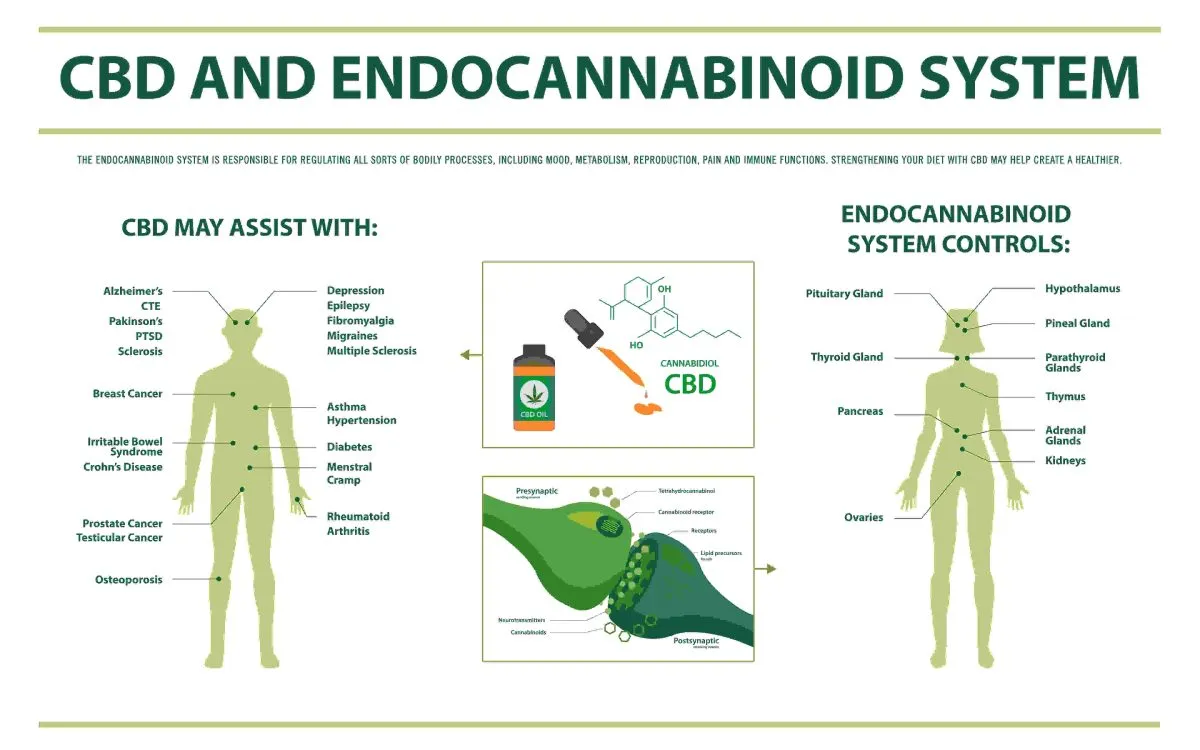
To fully explain this, we have to introduce you to the endocannabinoid system, otherwise referred to as the ECS.
The endocannabinoid system (ECS)
The endocannabinoid system is a pretty recent addition to the long list of systems found in the human body, with its existence only being confirmed in 1988. Since then, though, research has shown that it plays a massive role in regulating and maintaining many essential biological functions and processes. Researchers now believe that it plays the role of “master regulator”.
The ECS is made up of three main components:
- Endocannabinoids - These are naturally occurring cannabinoids produced by the body that bind to cannabinoid receptors.
- Cannabinoid receptors - These are found on cells throughout the body and are the 'keyholes' that endocannabinoids and plant-derived cannabinoids (like CBD) have the ability to interact with.
- Metabolic enzymes - These are responsible for breaking down endocannabinoids once they have served their purpose.
Ok, but how does CBD fit into all of this?
Research into how CBD interacts with the human system is still somewhat in its infancy, but we do know a few things for certain.
Firstly, CBD does not seem to bind directly to either of the cannabinoid receptors like its psychoactive cousin THC does. It does appear to have a stronger affinity to the CB2 receptors, which are primarily found in the immune system and play a crucial role in modulating and reducing chronic rates of inflammation.
And while CBD doesn't have as strong an interaction with the receptors as THC, it does interact with them in more indirect ways. Studies have shown that CBD can inhibit the action of the metabolic enzymes responsible for breaking down endocannabinoids, which ultimately results in an increased amount of endocannabinoids circulating in the body. This, in turn, can positively affect a range of bodily functions, including pain perception, mood regulation, and immune response.
CBD has also been shown to interact with the serotonin system, specifically the 5-HT1A receptor, which is responsible for regulating anxiety and stress levels in the body. By interacting with this receptor, CBD may help to reduce feelings of anxiety and promote a sense of calmness.
How fast does CBD flower work?
That totally depends on how it is used, consumed, administered, taken, or however you want to put it.
There are a couple of ways that dried CBD hemp flower is usually taken, and each option comes with a different onset time of effects, and also how long you will feel or notice those effects.
It is also important to understand that while we can lay out some broad guidelines here, there are a bunch of factors that can affect how you personally perceive and experience CBD's effects, such as your individual body chemistry, metabolism, diet, stress levels, and any pre-existing medical conditions.
But as a general rule of thumb, here's what you can usually expect:
Smoking
Smoking is probably the most common way for people to enjoy the benefits of CBD hemp flower. By grinding up the buds and rolling them into a joint, or packing them into a pipe, you can get the benefits of CBD extremely quickly. Typically, it will take just a minute or two for the body to absorb the CBD fully, and then another 5-10 minutes or so for you to feel the effects, with the peak of the experience usually lasting for around an hour or two. After that, you will gradually come down over a period of another 2-3 hours.
Vaping
Vaping is another popular option that offers a faster onset compared to other forms of administration (except for smoking). With vaping, the CBD is heated and inhaled through a vaporizer, but no combustion is involved, which lowers the number of harmful byproducts you are exposed to. Depending on the quality of your vape, you can start feeling the effects in around the same amount of time as smoking, typically hitting in the first 10 minutes. The length of effects also mirrors smoking, with peak effects lasting for an hour or two, before tapering off over the next 2-3 hours.
Edibles
CBD edibles have become increasingly popular over the past few years, and while most people will just buy ready-made CBD edibles, you can also easily turn your CBD hemp flower into a base for making edibles. Edibles have a much slower onset time, taking anywhere from 30 to 90 minutes for the effects to be felt. The duration of effects is also longer, with peak effects being felt 2-3 hours after consumption and continuing for around 6 to 8 hours. Here’s a great recipe for gummies if that’s what you're into.
Topical creams and ointments
Topical application of the oil made from CBD flowers can offer targeted and localized relief, but it does come with the slowest onset time of effects. It can take up to an hour or more for the body to absorb the CBD through the skin and into the bloodstream, with lasting effects typically being felt for up to 5-6 hours.
Tinctures
You can also turn your CBD hemp flowers into a tincture, which can be taken sublingually (under the tongue), which offers a rapid onset of effects (around 15 minutes) with longer-lasting effects (5-6 hours). CBD oil can also be used sublingually.
Does CBD flower make you feel high?
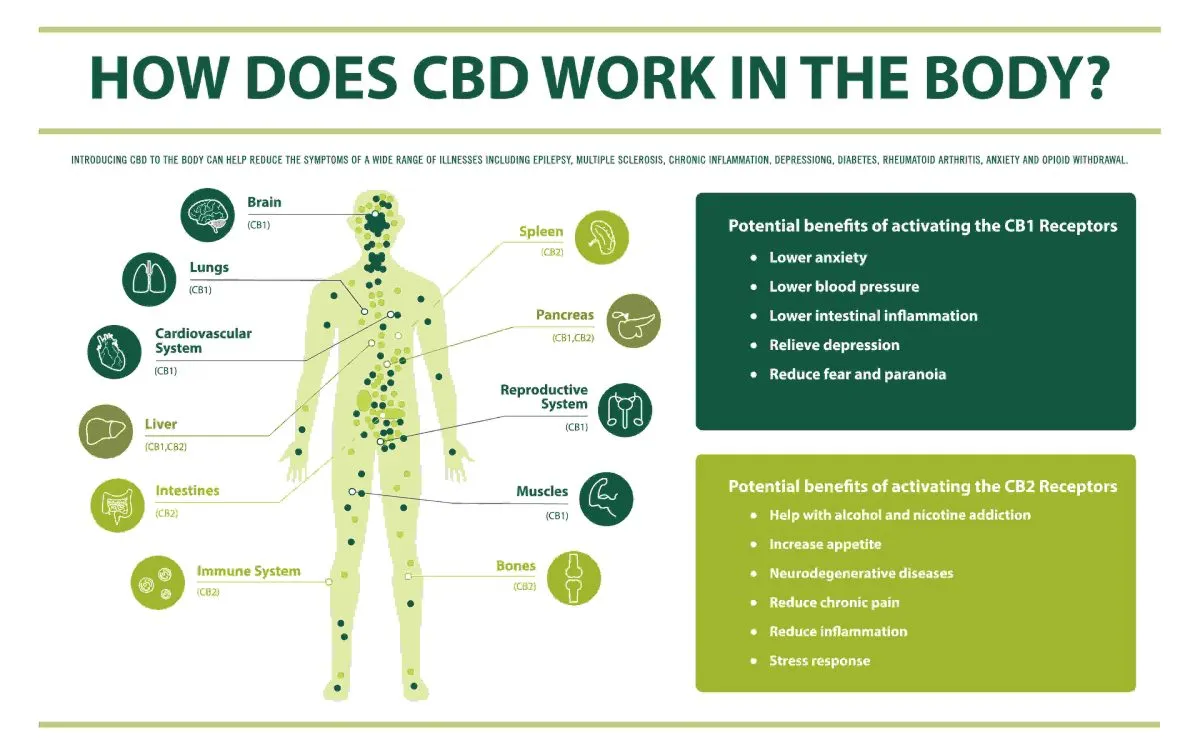
In most cases, any product marketed as CBD hemp flower here in the USA should come with less than 0.3% THC content (or 0.2% THC in other countries). As long as you source your CBD flowers from a reputable and trustworthy supplier, then they shouldn't cause any psychoactive effects that would make you feel high.
While both hemp and marijuana come from the same plant species, cannabis sativa L., the main difference between them boils down to THC content. Marijuana is specifically bred for its high concentrations of THC (which can be up to 35% in this brave new world of recreational weed legality), while hemp is selectively bred to produce minimal amounts of THC, but higher levels of other cannabinoids, like CBD.
So, although hemp flowers do contain trace amounts of THC, they shouldn't be enough to trigger any psychoactive effects, which is why they are legal in many countries where recreational and medicinal cannabis are both still illegal.
With all that said, if you are worried about testing positive for THC on a drug test, it is best to look for CBD flowers that have been specifically bred to contain zero or extremely low levels of THC. Or you could try alternative forms of CBD, like isolate or broad-spectrum extract, which are also completely THC-free.
But if you are just looking to enjoy the benefits of CBD without any psychoactive effects, then CBD flower is a safe and effective option for you.
What are the uses of CBD flower?
CBD has been shown to offer a wide range of potential health and wellness benefits, and the research into the power of this remarkable compound is only just beginning. As it stands, CBD has been shown to have potential therapeutic properties for a variety of conditions, including:
- Pain and inflammation relief
- Anxiety and stress management
- Improved sleep and relaxation
- Neurological conditions, such as epilepsy and multiple sclerosis
- Skin conditions like acne and eczema
- Psychiatric disorders, including PTSD, depression, and addiction
Even though there is still much research to be done, the growing body of evidence suggests that CBD hemp flower may be a powerful tool in promoting overall health and well-being.
How is CBD flower different to cannabis?
While both CBD hemp flower and cannabis (otherwise known as marijuana, weed, ganja, pot, etc.) come from the same plant species, cannabis sativa L., the main difference between them boils down to THC content. Cannabis is specifically bred for its high concentrations of THC (which can be up to 35% in this brave new world of recreational weed legality), while hemp is selectively bred to produce minimal amounts of THC, but higher levels of other cannabinoids, like CBD.
So, although hemp flowers do contain trace amounts of THC, they shouldn't be enough to trigger any psychoactive effects, which is why they are legal in many countries where recreational and medicinal cannabis are both still illegal.
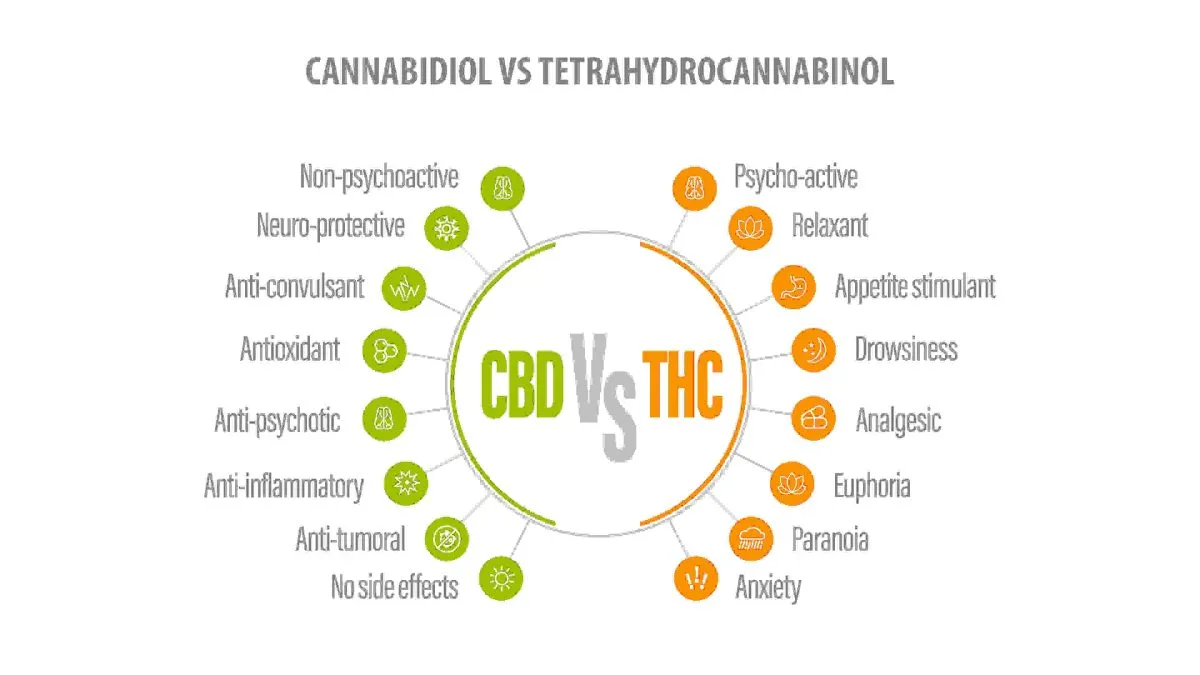
Is CBD flower legal?
Now, this is where it gets a little confusing. Here in the USA, it all depends on the source of the CBD flower and whether it comes from hemp or cannabis.
- In the USA, CBD derived from hemp is federally legal as long as it contains less than 0.3% THC. But, if the CBD has been extracted from a cannabis plant containing more than the 0.3% THC cutoff, then it falls under the umbrella of 'marijuana' and is still illegal at a federal level, even if the final CBD product contains less than 0.3% THC.
- The same goes for the UK, although the cutoff is 0.2% THC.
- In Canada (and other countries that have fully legalized weed), CBD derived from either hemp or cannabis is legal for both medicinal and recreational use, as cannabis is fully legal at the federal level.
However, it's important to note that laws surrounding CBD are constantly evolving and can vary greatly between countries and even states, so it's best to stay informed about your local regulations before making any purchases.
When it comes to pure CBD hemp flowers, here in the USA, as long as the THC content is less than 0.3%, the flowers of the plant are totally legal. This finding was confirmed by the DEA in December 2022. So, as long as you're sourcing your CBD flowers from a reputable and trustworthy supplier, then you shouldn't have any legal issues.
The best CBD-dominant strains
So, there we have it, a full rundown on CBD hemp flowers, and why they are becoming such a popular option. Now, to wrap it all up, let's take a look at some of the best CBD-dominant cannabis seeds currently on the market. Not all of these are legally classed as 'hemp', but all do offer high levels of CBD.
- ACDC Feminized - ACDC is one of the very best CBD-rich strains to hit the scene in the past 12 months, and it's easy to see why. With a rich and powerful 20% CBD potential combined with less than 1% THC, ACDC is already starting to gather a following for its ability to relax without sedation and to relieve without intoxication - a medicinal patient's dream.
- Harle-Tsu Feminized - Another shining example of CBD-heavy brilliance, Harle-Tsu is a slightly Indica-leaning, high CBD strain (testing in at an average of around 24% CBD) that produces more of a body buzz than many other strains bred for their medicinal purposes. THC levels are once again kept below 1%, making this another great choice for patients, and if awards are anything to go by, Harle-Tsu has them in spades. Winner of the Emerald cup in 2012, 2013 and 2014 for best CBD strain.
- CBD Queen Feminized - If you're looking for a strain that offers the golden plus 20% CBD, but also packs a very slight THC punch, CBD Queen should be right up your alley! With CBD contents well over 20%, and THC that can get up to around 9 or 10%, the Queen is a great choice for those looking to step away from prescription drugs. And to top it off, she's a huge yielder.
- Mandarin CBD Feminized - One issue that many have with CBD-dominant options is their sometimes lack of heavy flavor and aroma. Not the case with Mandarin CBD - she comes to the table with a true citrus kick and flavor that is impossible to miss. With a THC content of around 5% and CBD of up to 16%, this Sativa-dominant strain delivers a clear-headed, uplifting and subtle high that's perfect for daytime use.
- Ringo's Gift Autoflower - If autos are more up your alley, then it's pretty hard to go past Ringo's Gift. Created by and named after the cannabis activist Ringo Lawrence, this was the first autoflowering cultivar to ever top the 25% CBD marker, and continues to be one of the very few strains that can truly claim that level of CBD dominance. With a low average THC level of just 1%, this strain offers great medicinal potential and a super fast turn around from seed to harvest.
The future of hemp and CBD flowers
As more and more people become aware of the benefits and potential uses of CBD, we can only expect to see a continued increase in the popularity and demand for hemp flowers. With advancements in genetics and cultivation techniques, we will definitely see higher levels of CBD being bred into these plants, making them an even more potent option for those seeking relief without psychoactive side effects.
And with the legalization of cannabis creeping across the globe, we can also expect to see a wider variety of CBD-rich strains available on the market, providing both medical patients, and your every day cannoisseur with even more options to choose from. It's an exciting time for the hemp and CBD industry, and we can't wait to see what the future holds.
